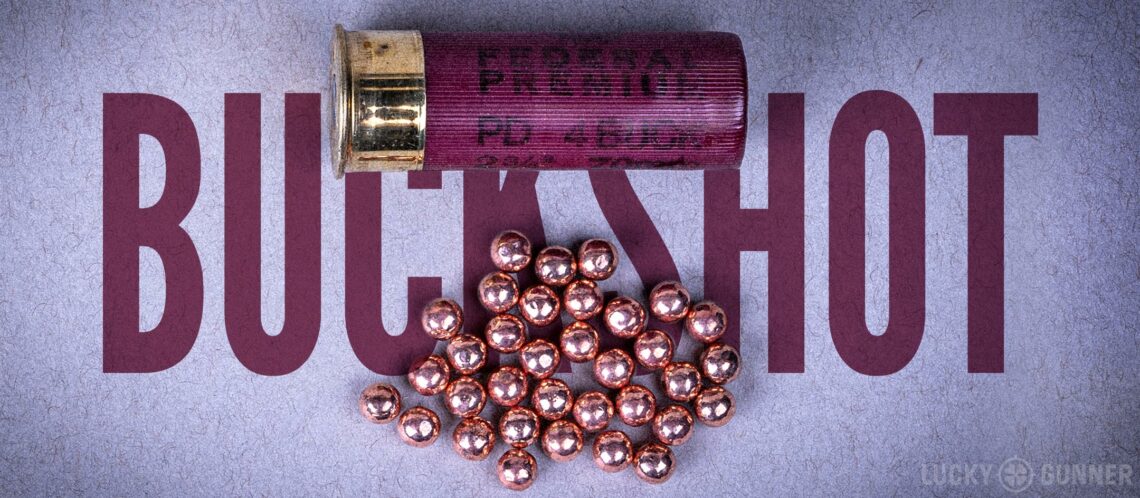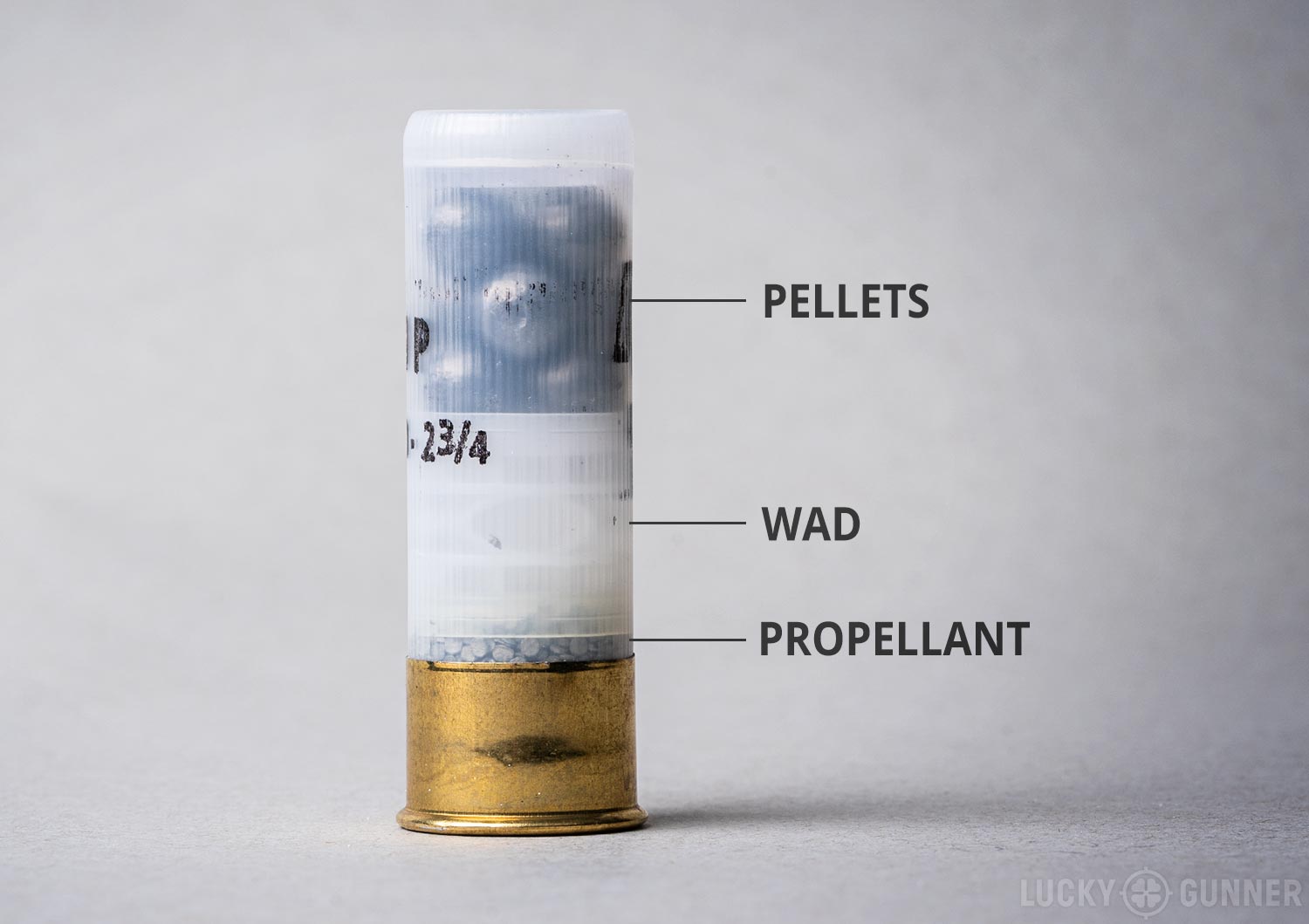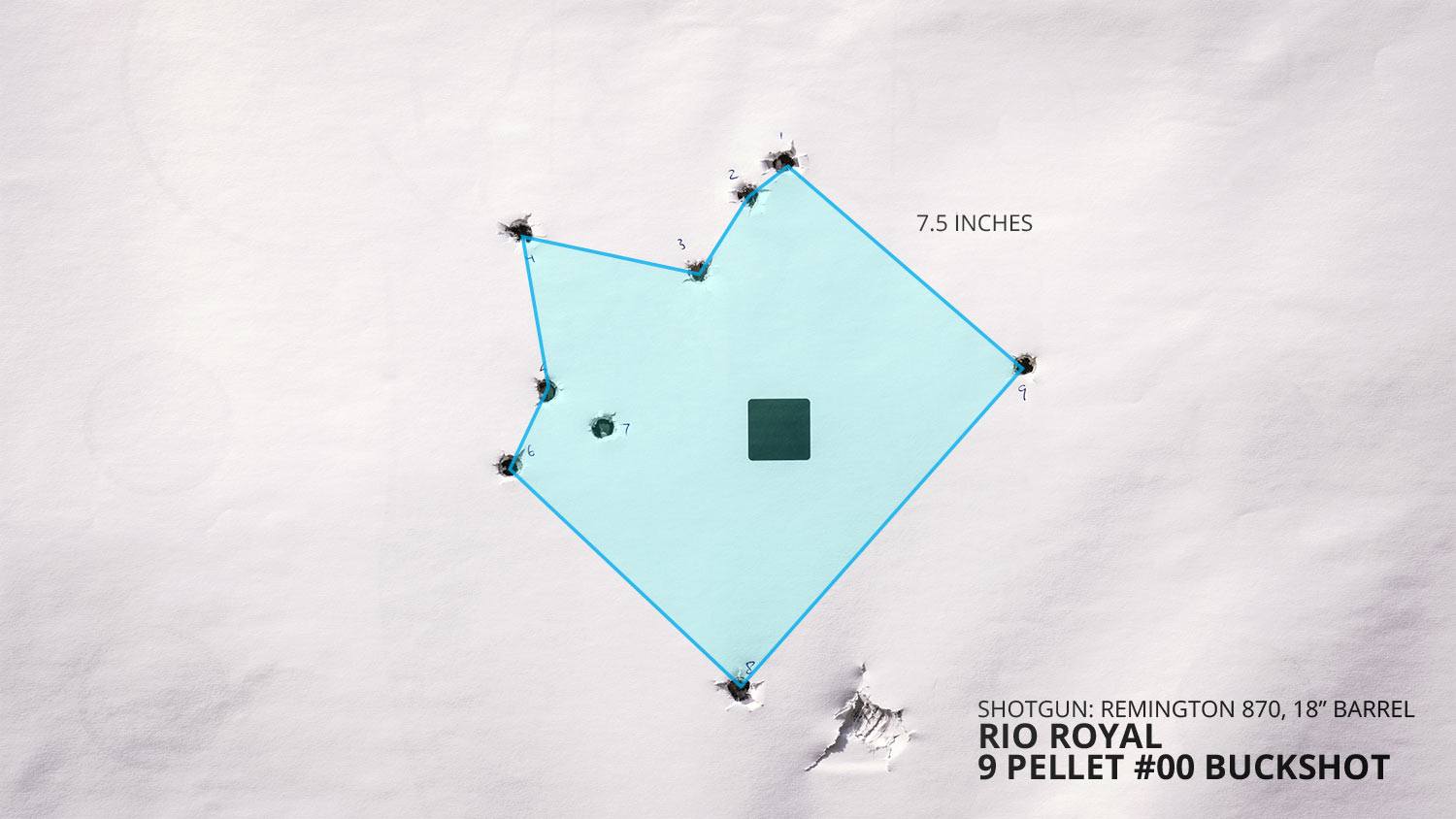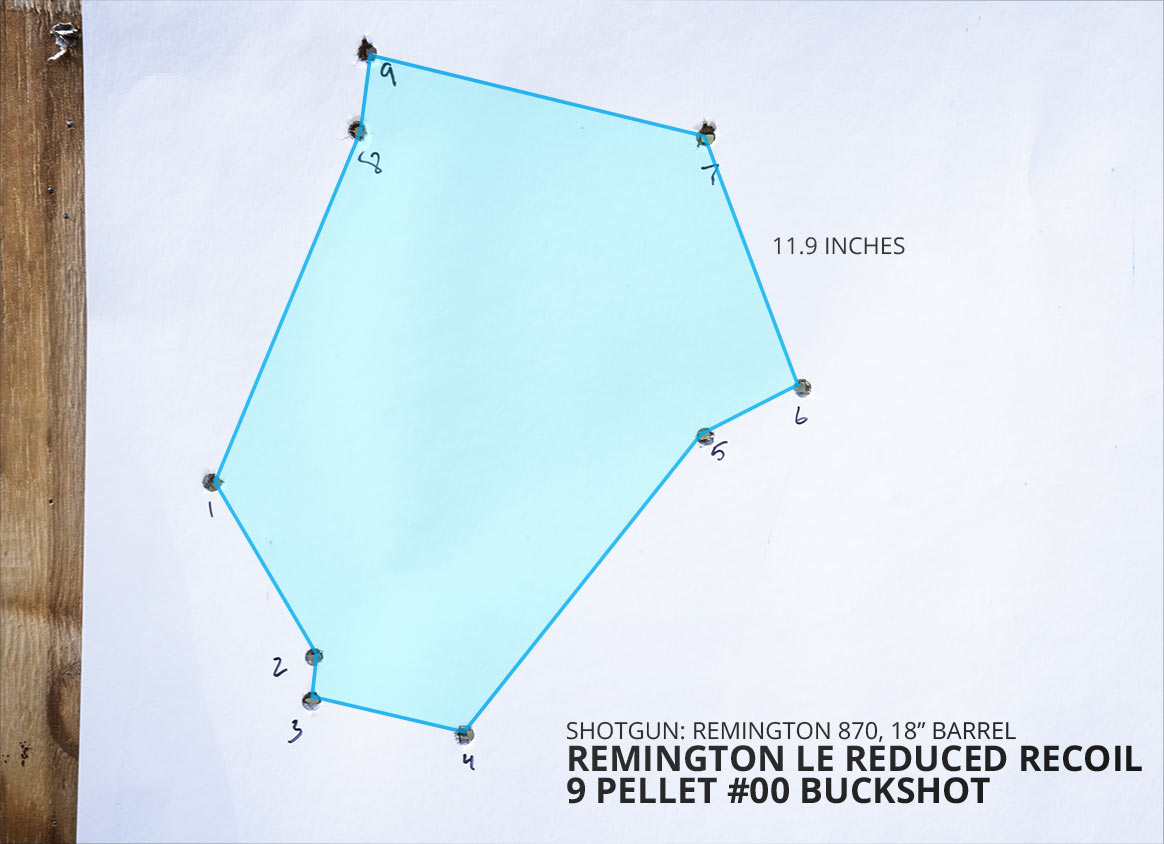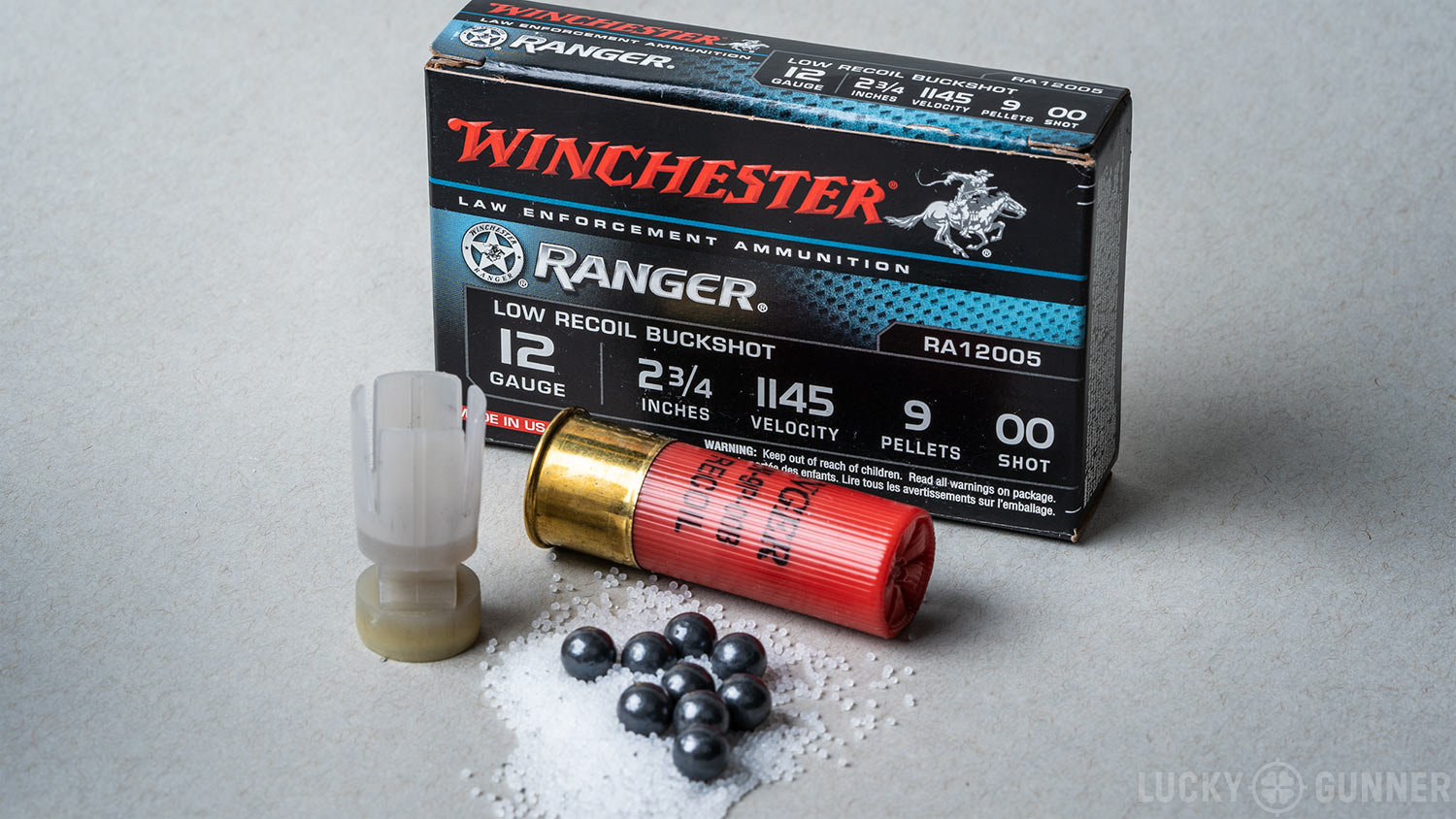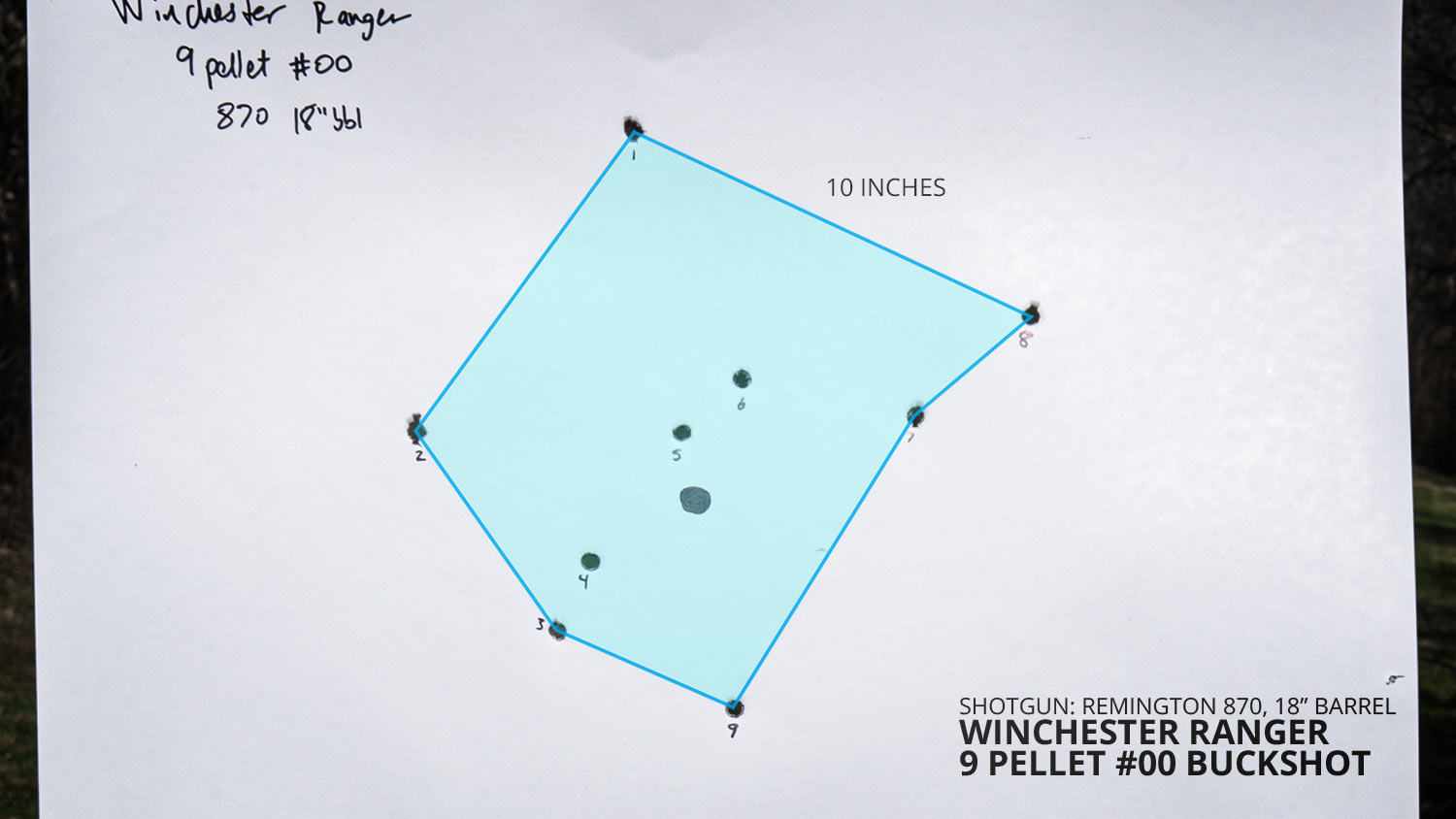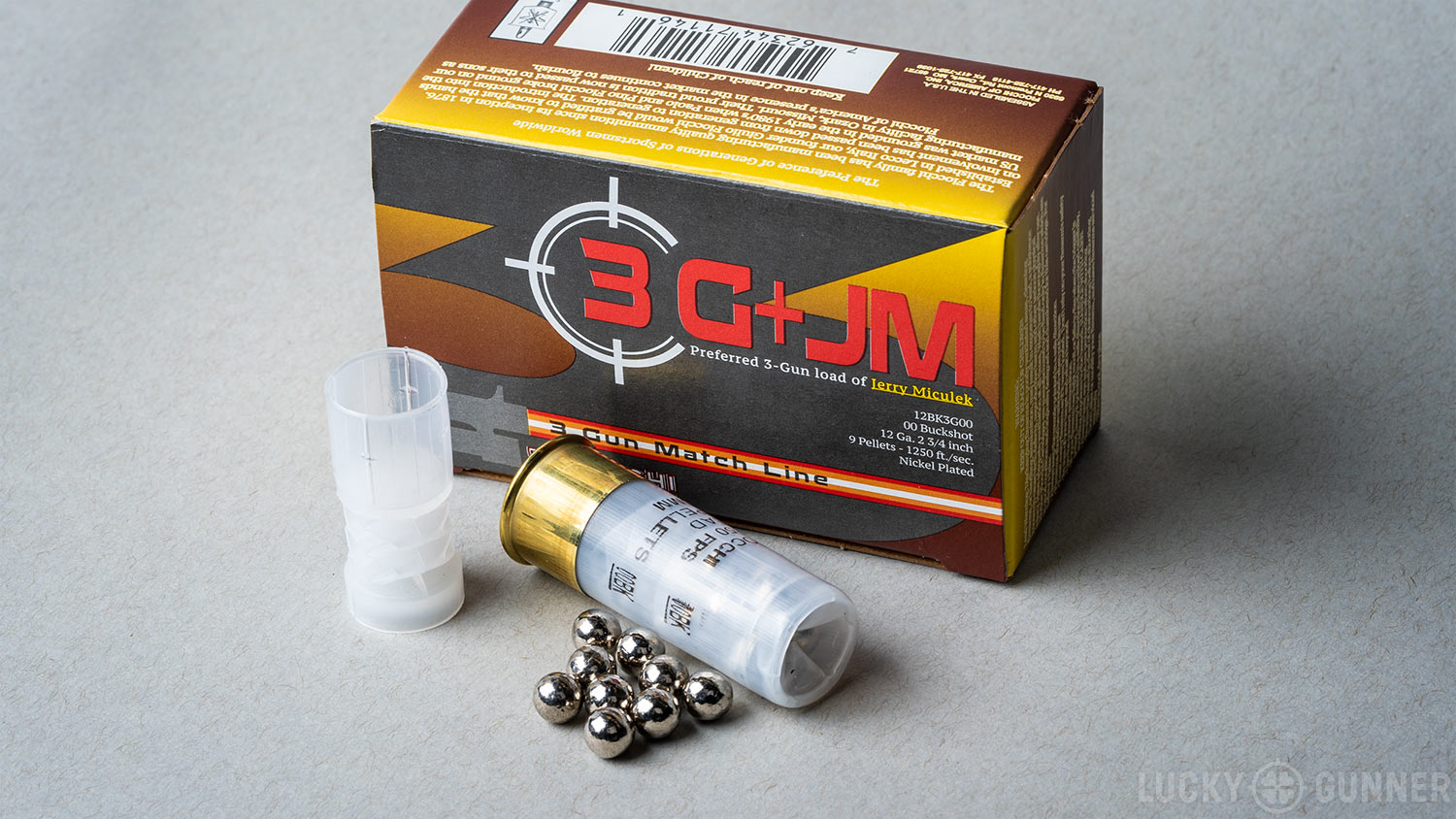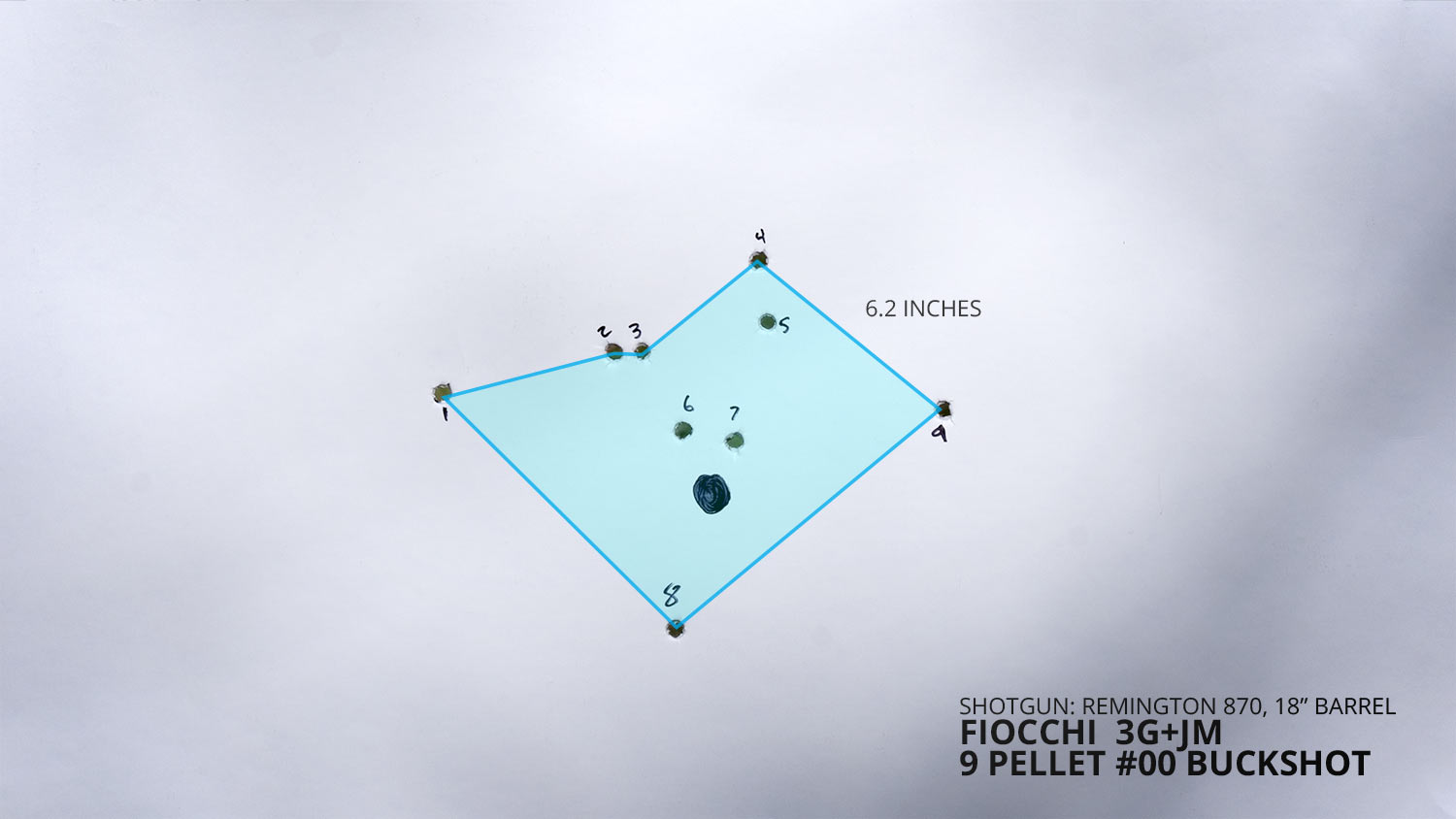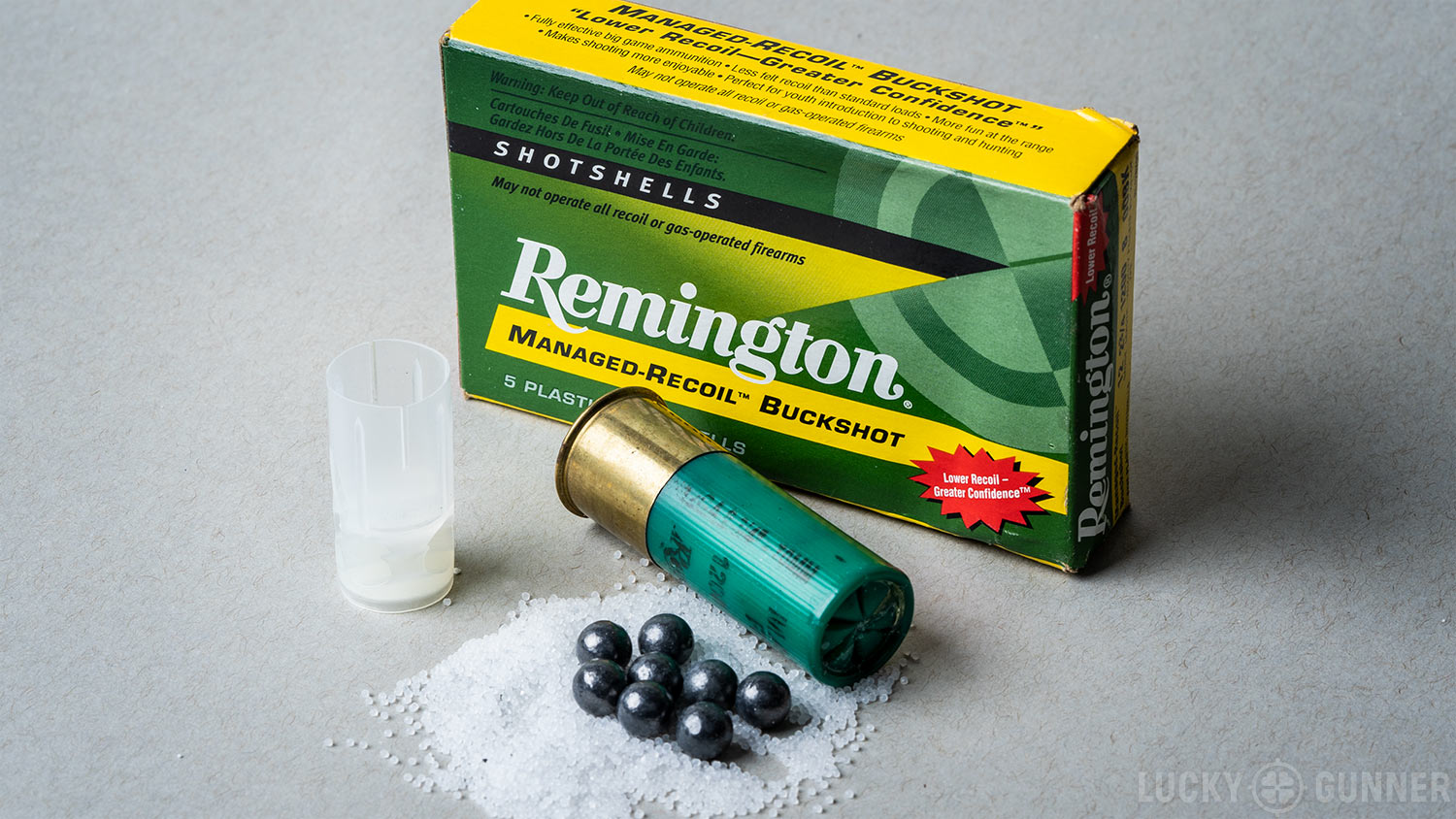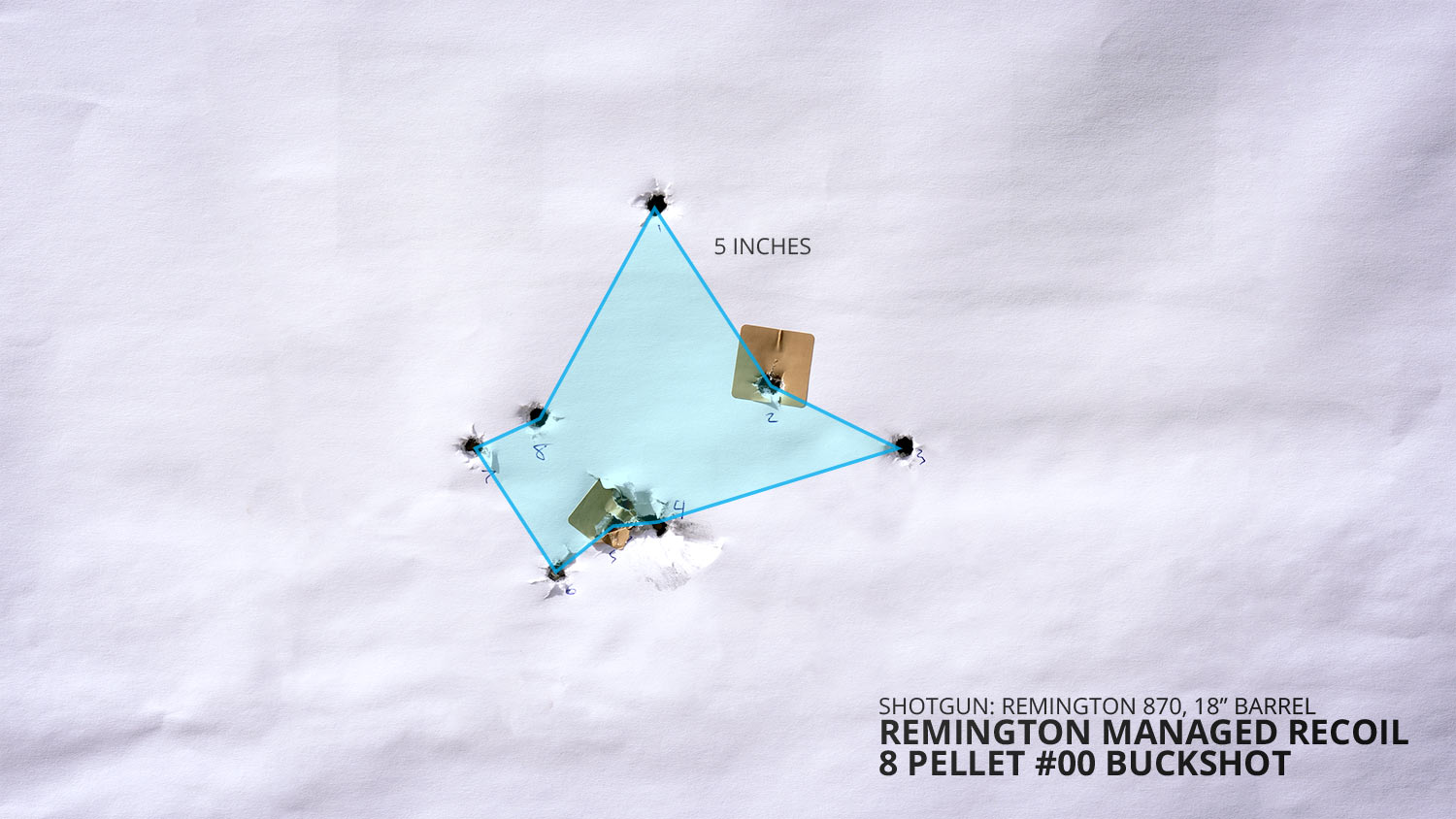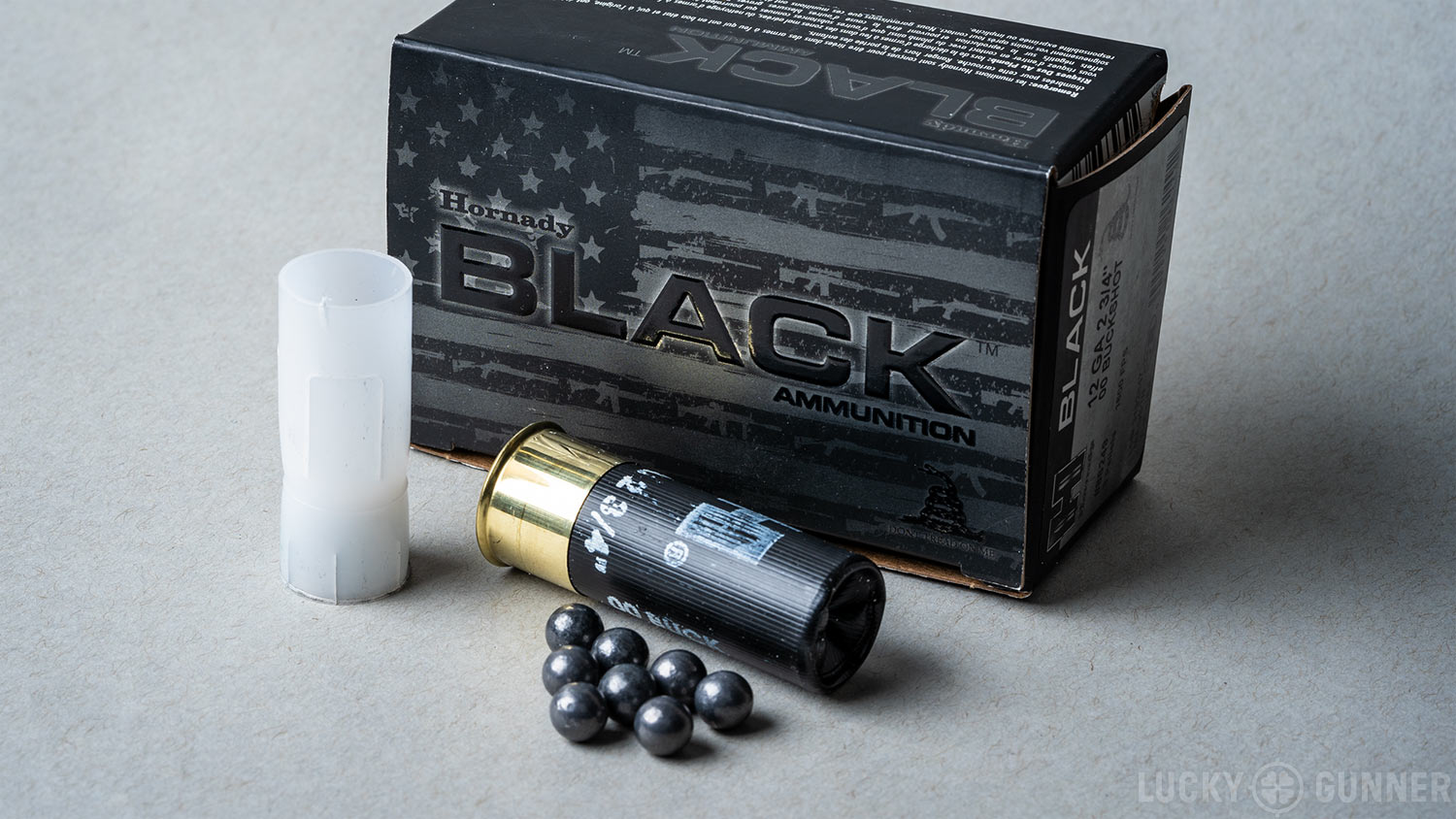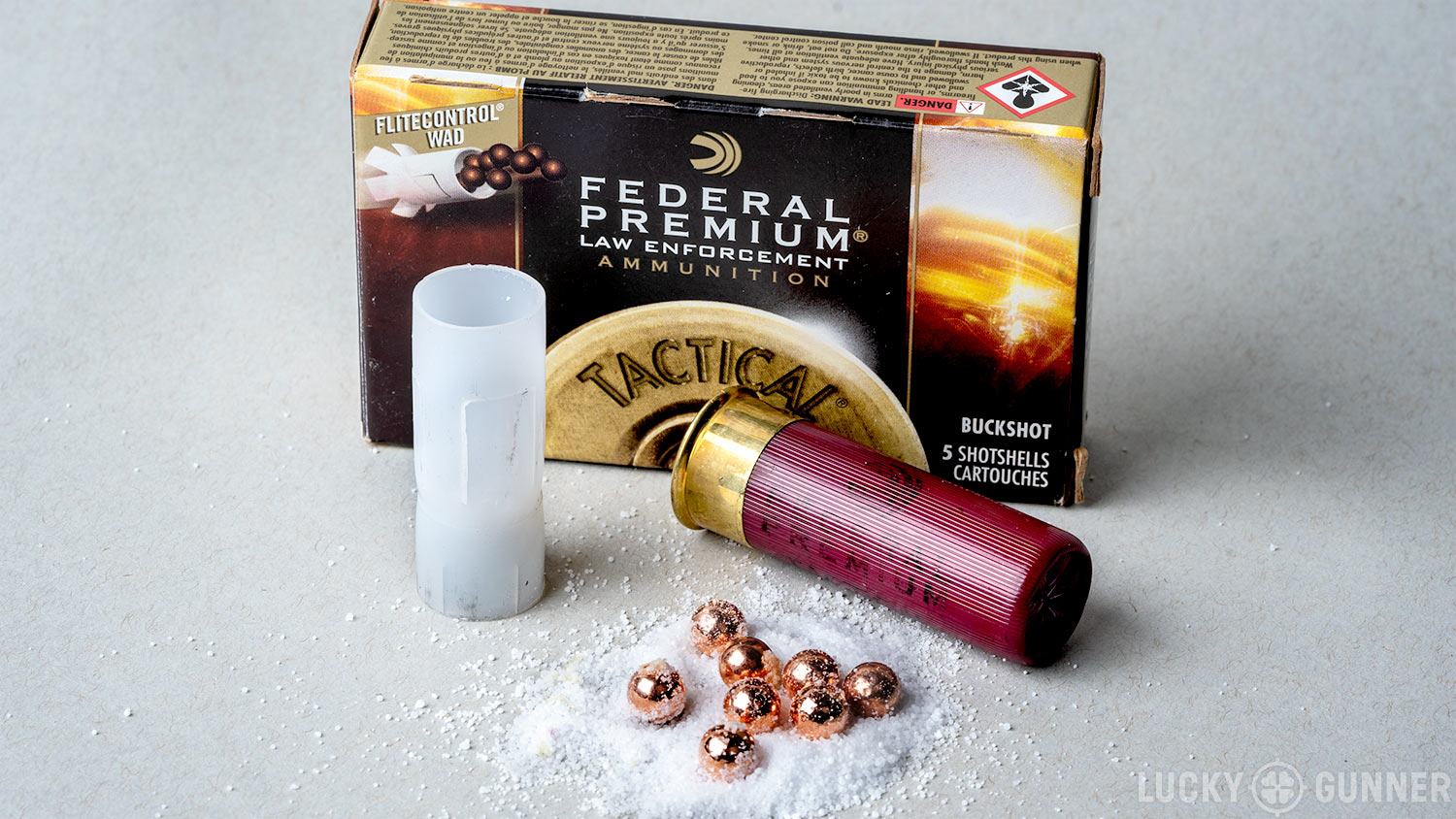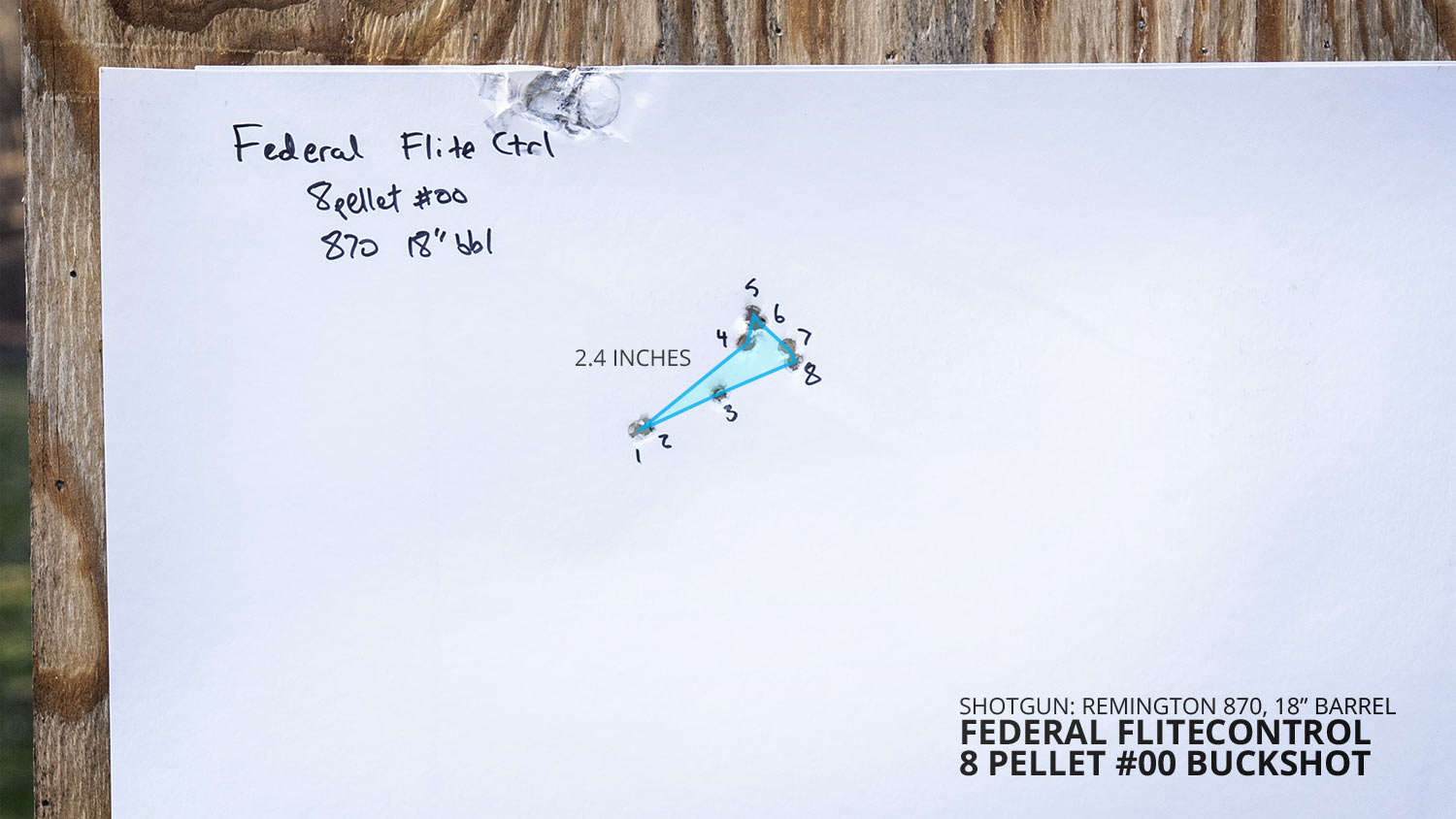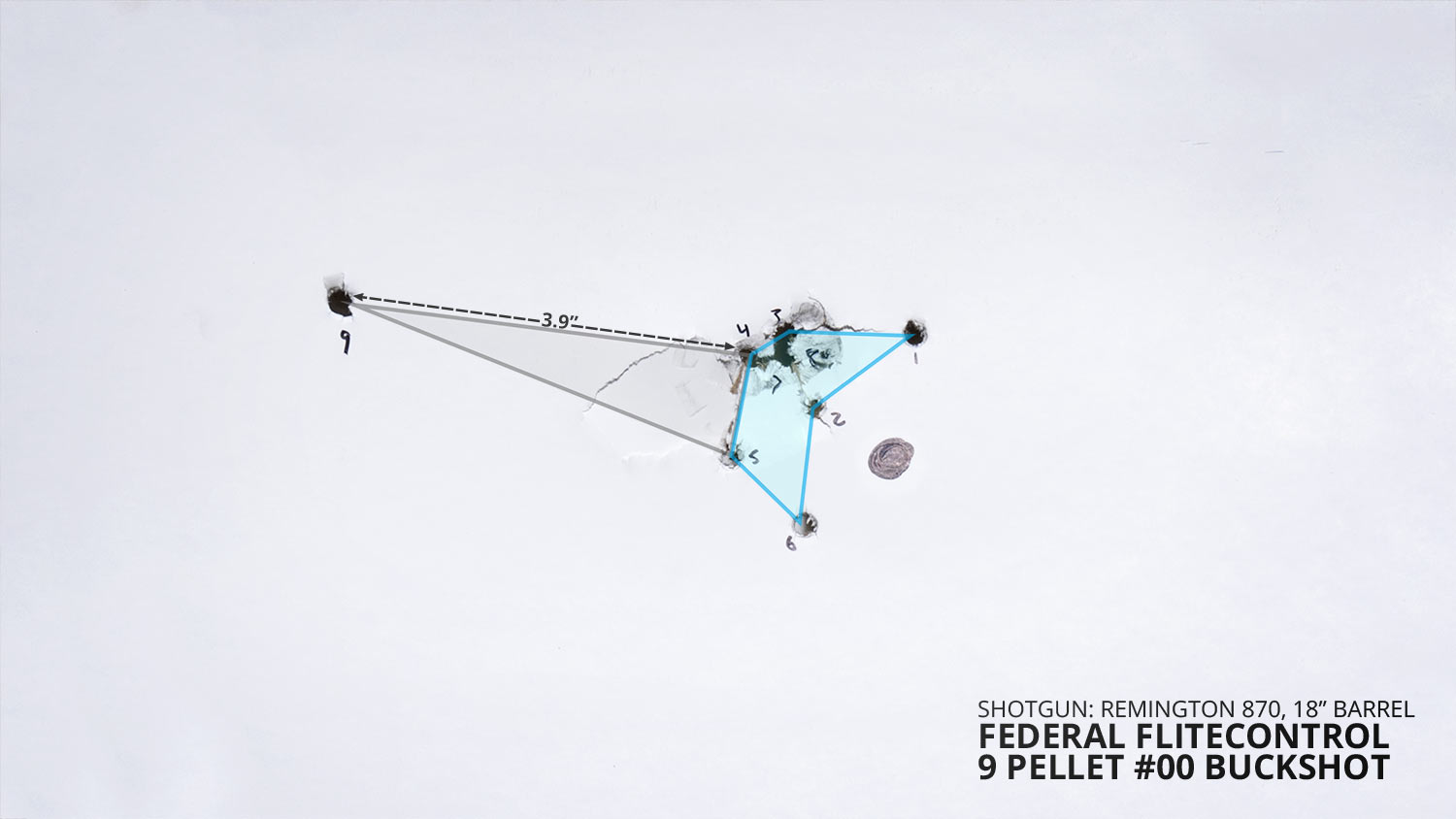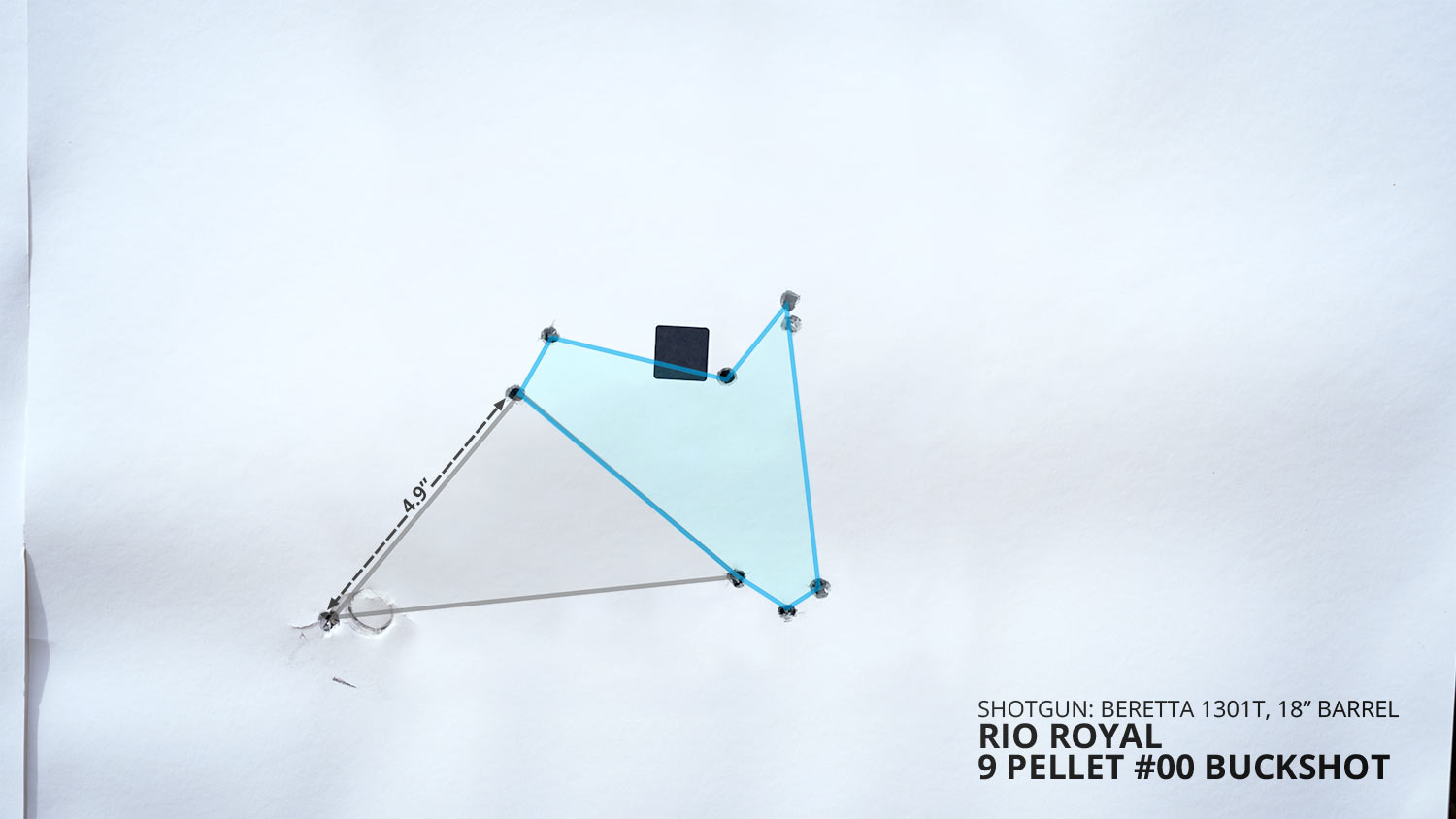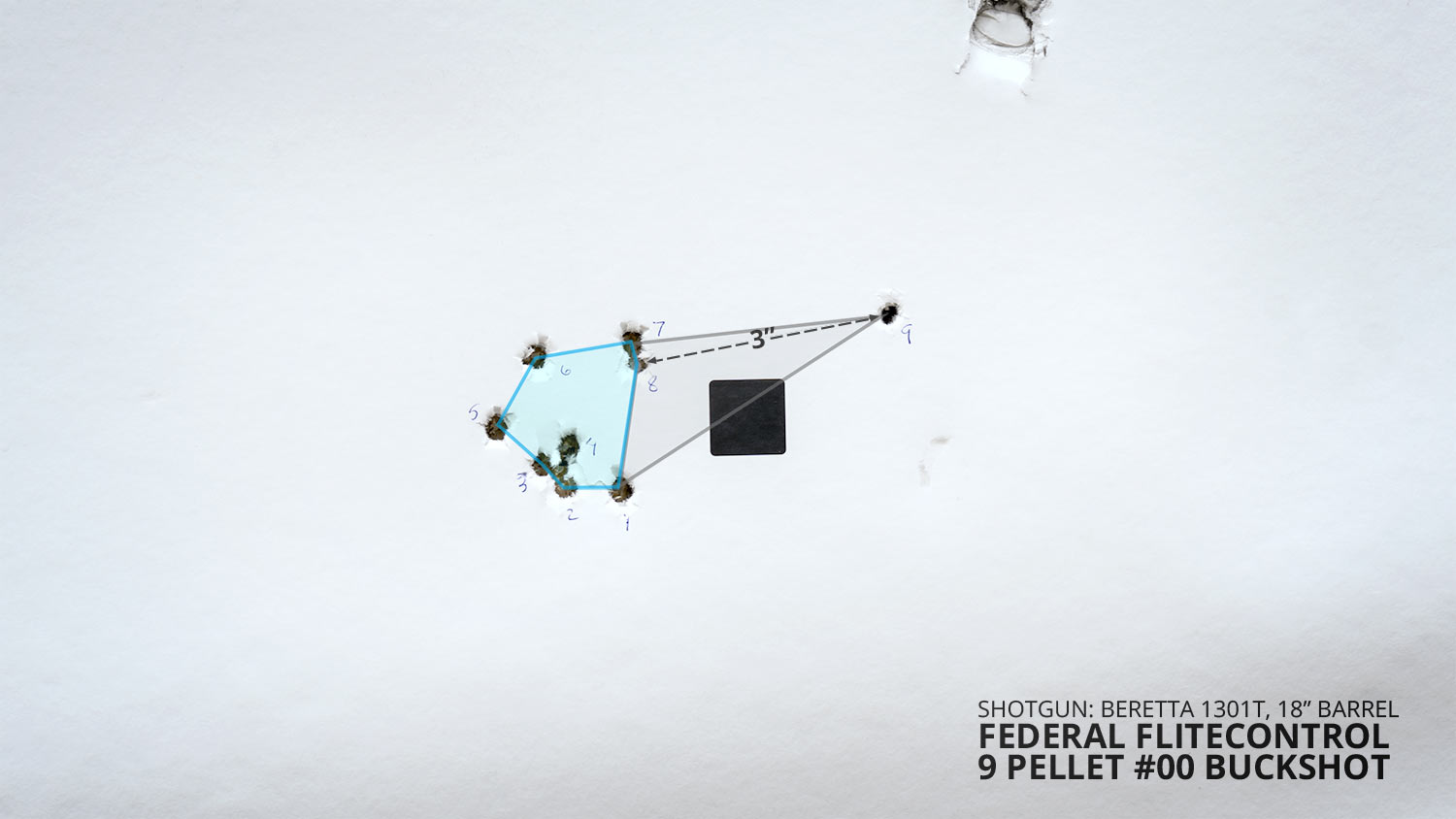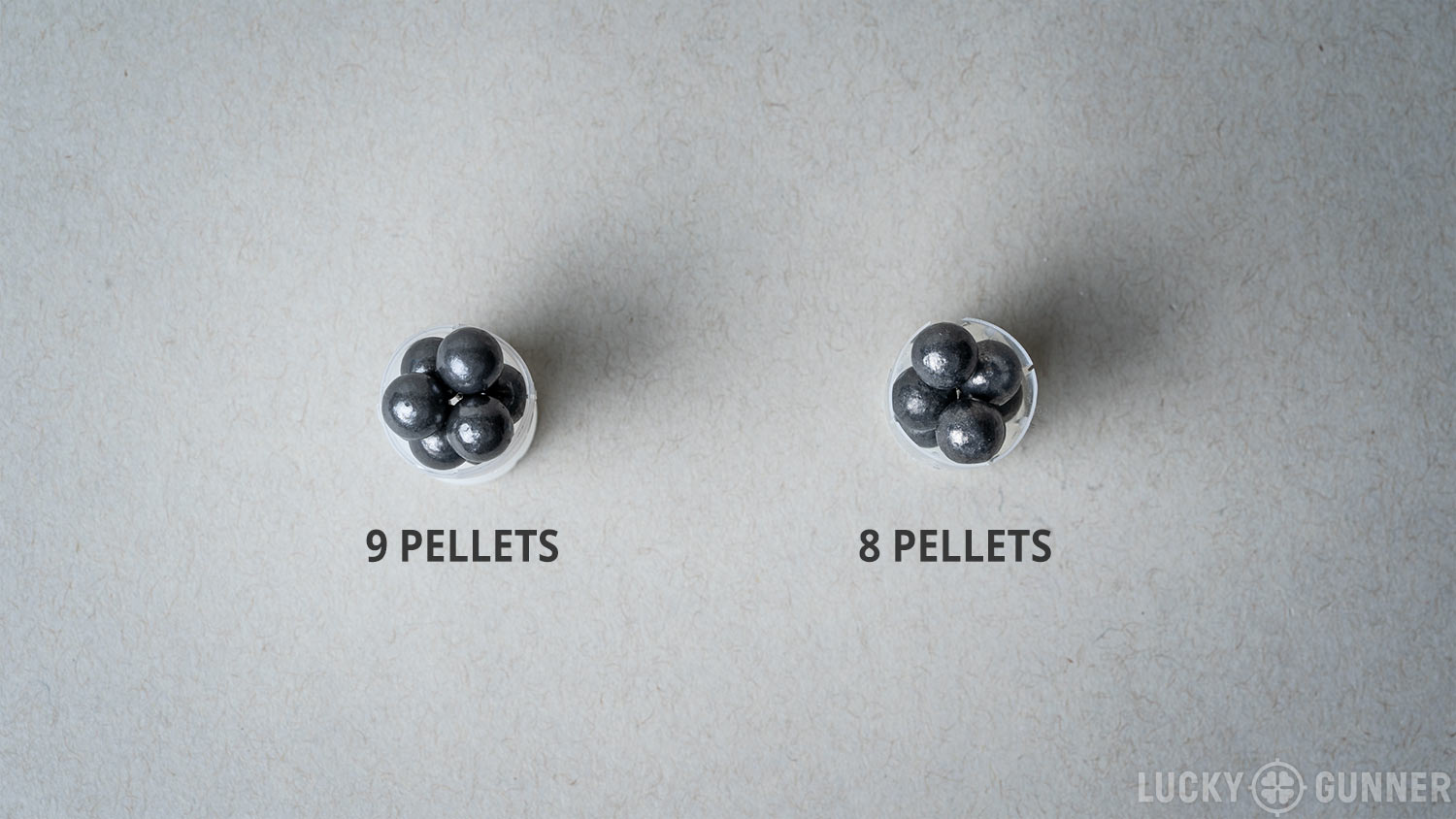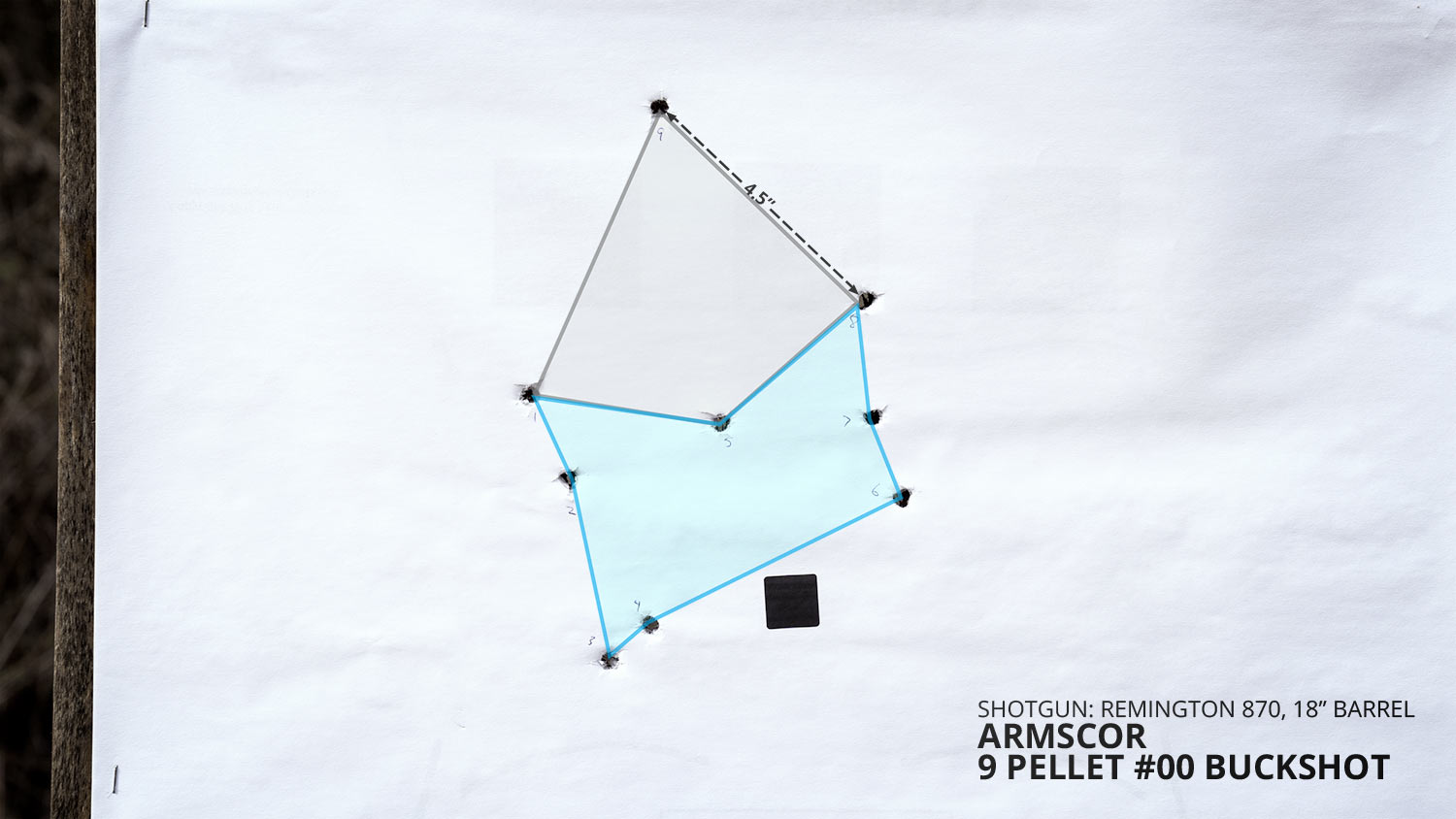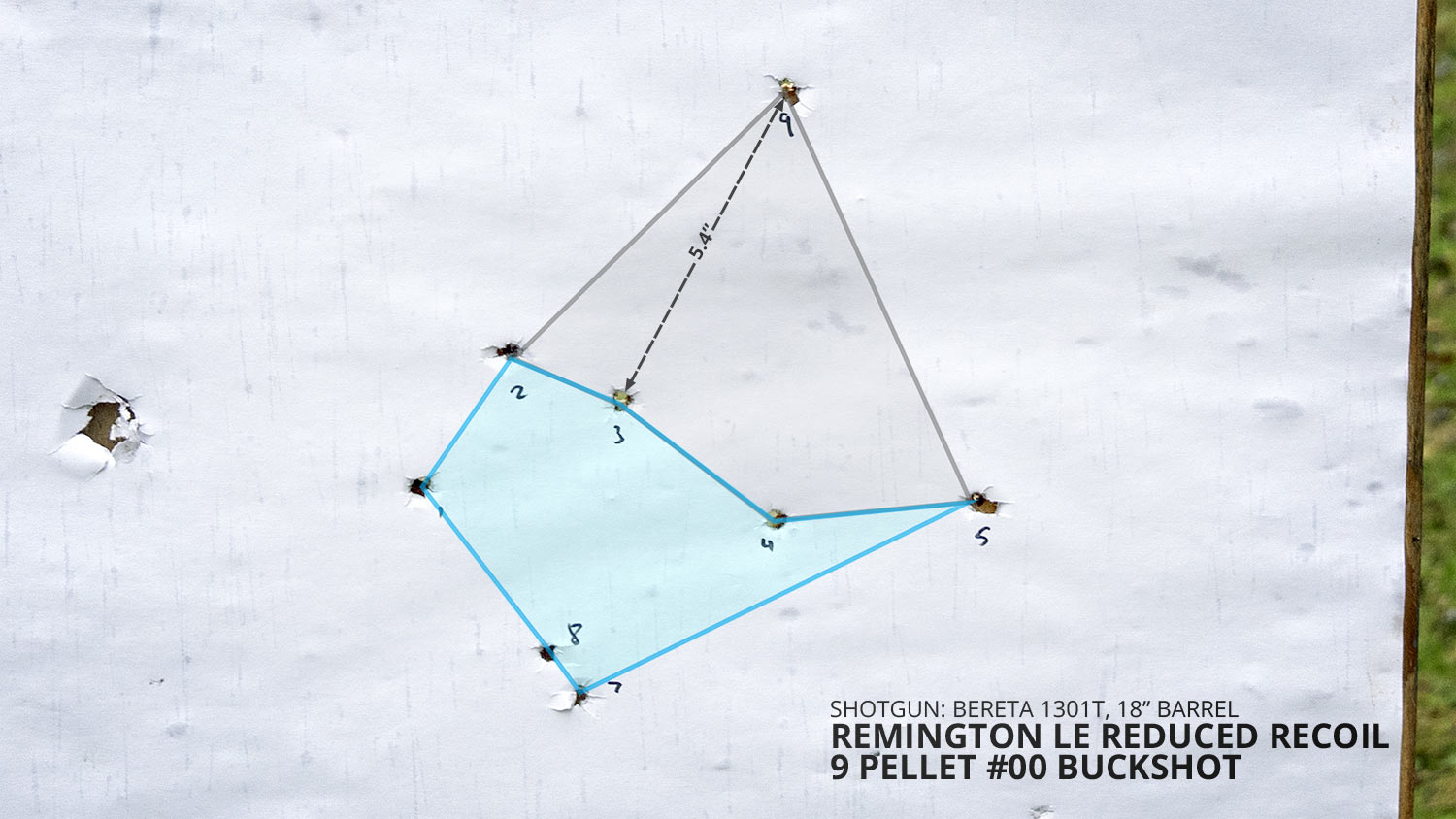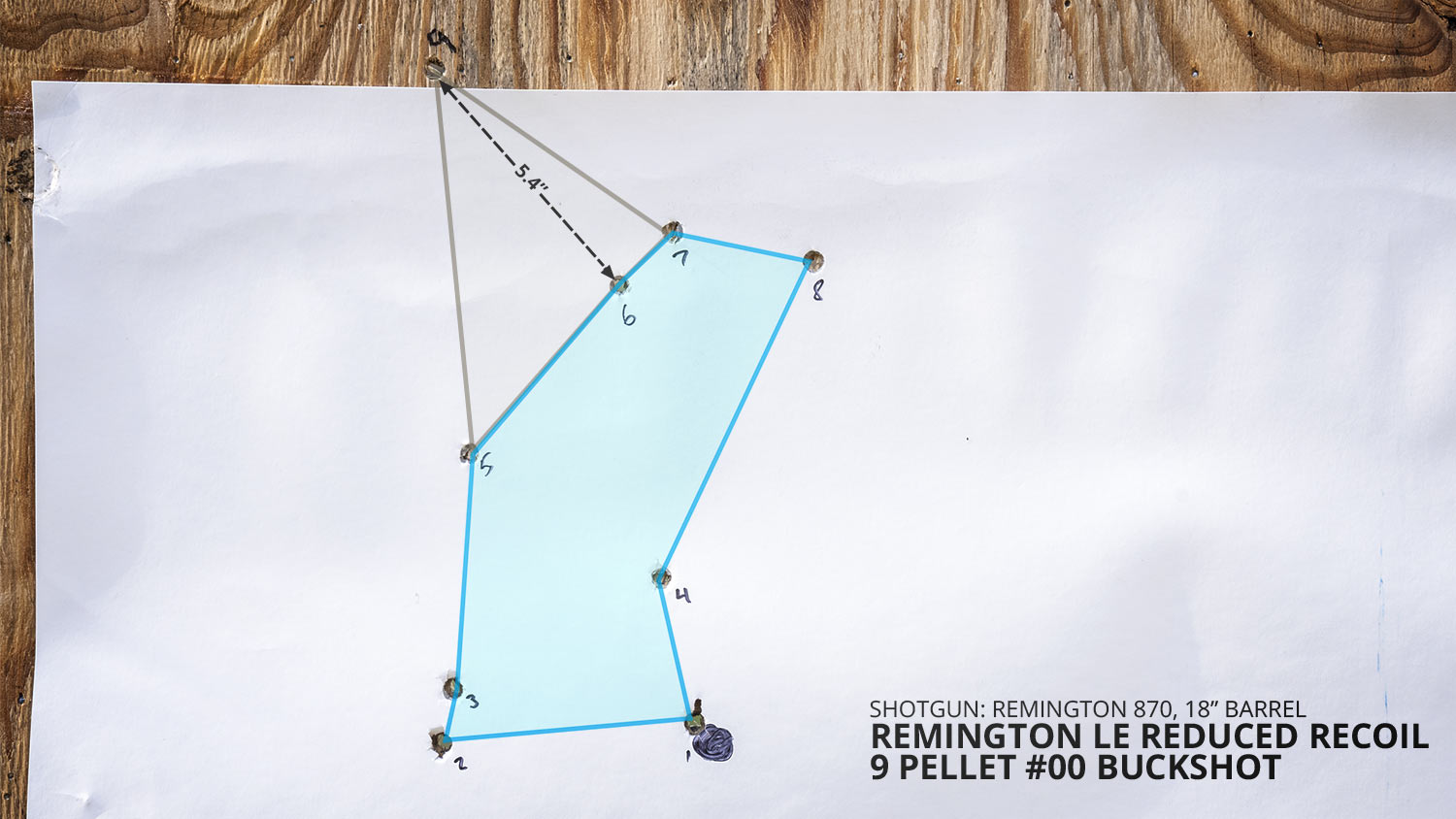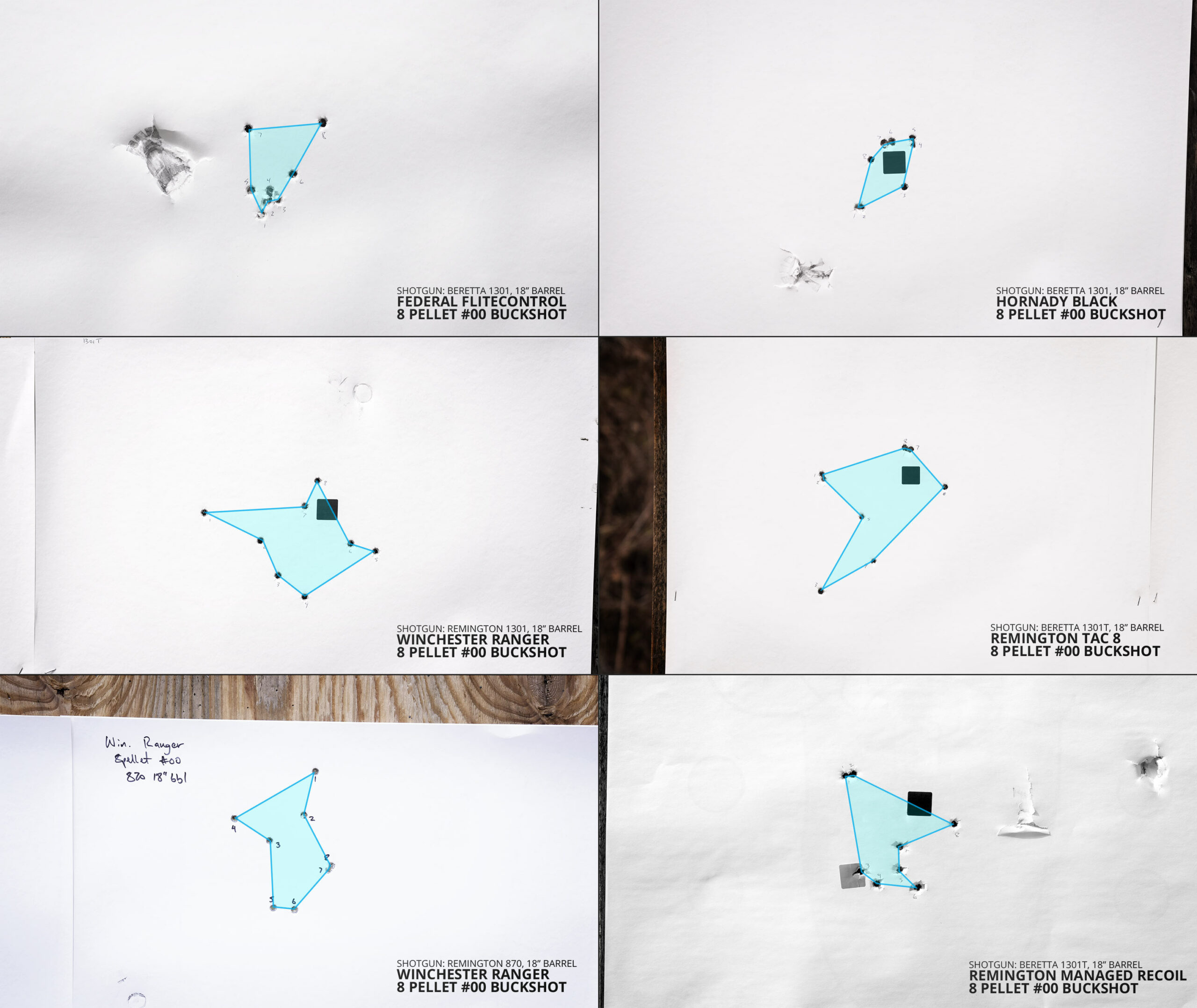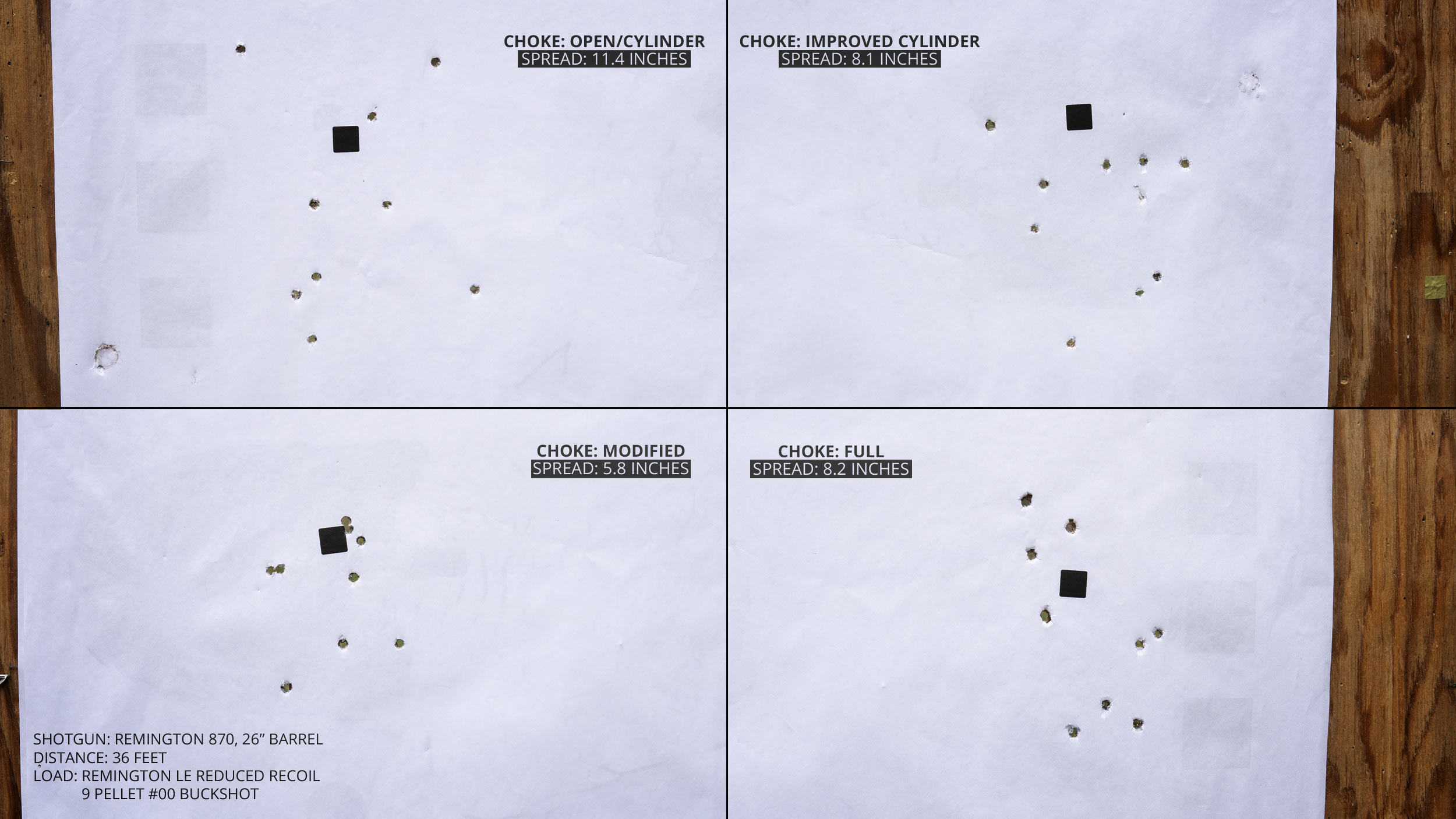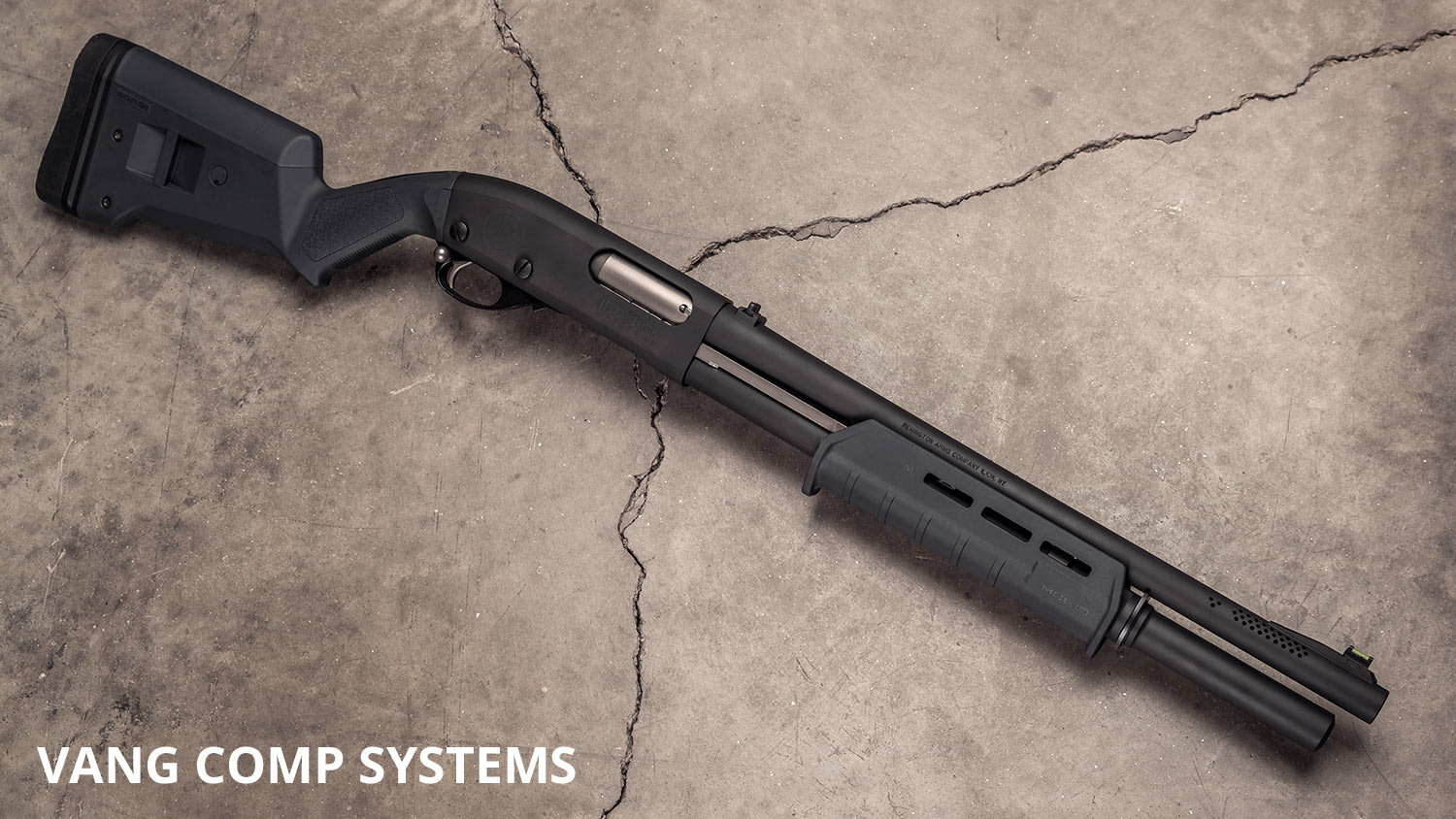Today we’re continuing our deep dive into the topic of using buckshot for personal protection. If you missed Part 1, I’d recommend looking over that one first. In this second and final installment, we’re looking at what buckshot is made of (literally) and the advantages tight-patterning buckshot over slugs or a carbine. Watch the video below for the details, or keep on scrolling if you’d rather read the full transcript.
Welcome back to our two part series all about stuff you should know about buckshot. In Part 1, I talked about the different types of buckshot, the importance of patterning your buckshot, and why a smaller pattern is usually better in the context of protecting your home. I left off by mentioning a few common objections to using a tight-patterning buckshot and I said I would answer those objections this week.
I will be getting there in just a minute, but first, let’s go back to something else I mentioned last time and we’ll call this the fourth thing you should know about buckshot…
4. Controlled vs. Uncontrolled Pattern Buckshot
Ammo makers have employed a few different strategies over the years for controlling the spread of buckshot. Let’s look at a few of the most common ones and whether they actually make any difference.
This is a round of Rio Royal #00 buck. This is the cheap stuff. It’s really great for practicing. But the pattern is completely uncontrolled. This is what I would call a basic “lead-chucker load.” There’s powder down here. There’s a simple plastic wad to separate the powder and pellets and to fill the extra space in the shell. And then you’ve got the nine plain lead pellets on top.
And here’s a pattern I got with this load. This is at 40 feet with a Remington 870 with an 18-inch cylinder bore barrel. The pattern is about 7 and a half inches wide. It’s certainly not the worst pattern I’ve seen from that barrel, but it could be a lot tighter. I wouldn’t have to worry as much about accidentally throwing a pellet off target.
The theory is that all of these pellets are trying to get out of the barrel at once and they slam into each other which creates flat spots on the soft lead. Then the pellets are no longer perfectly spherical and they don’t fly as straight.
Buffered Buckshot, Plated Buckshot, and Shot Cups
So to prevent that, sometimes ammo companies will put a buffer compound in the shell to keep the pellets from invading each others personal space. It’s usually some kind of granulated synthetic material. Here’s a round of Remington Law Enforcement Reduced Recoil 9 pellet #00 buckshot. I cut one of these open and found these little plastic disks they’re using as a buffer.
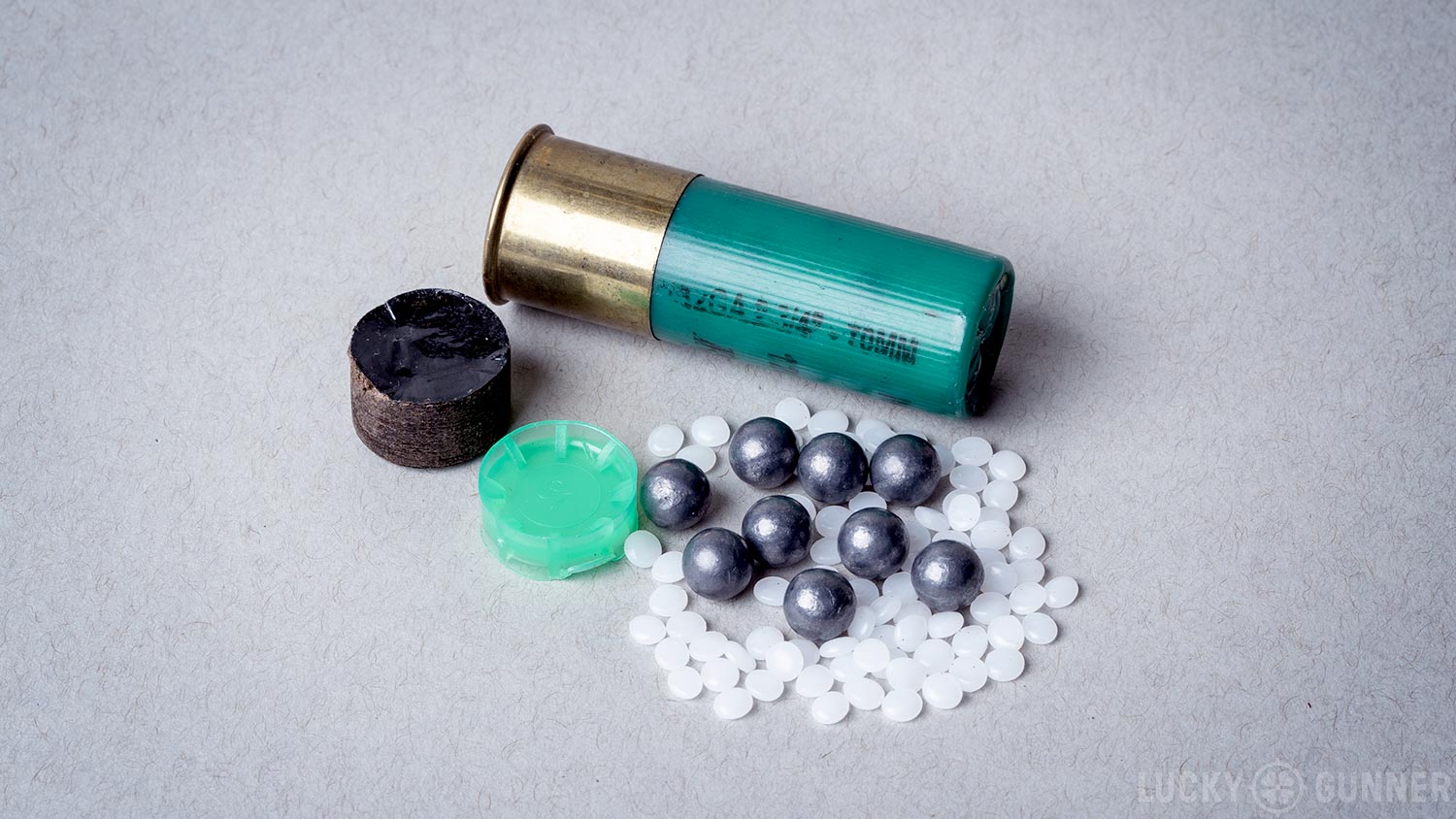
So let’s see what kind of pattern I got with this load…
That’s a 12-inch pattern. I guess the buffer didn’t really do much in this case, at least with this particular barrel.
Usually, the shot buffer is combined with some other features. Instead of a plain wad, for example, the pellets might be held together with a plastic shot cup. This #00 9-pellet Winchester Ranger load has a shot cup and the more common granulated-style buffer.
But when I tried it in the 870, the pattern was about 10 inches at 40 feet.
Another strategy is to harden the pellets, either by changing the formula for the lead or by plating them with something like copper or nickel. This is a Fiocchi 3-Gun 9 pellet load. The pellets are nickel plated and they’re also in a plastic shot cup but there’s no buffer.
My best pattern at 40 feet with this load out of the 870 was just over six inches. Not awesome, but a little better than the others.
Here’s a Remington Managed Recoil 8-pellet #00 load. It’s got a shot cup similar to the Fiocchi along with a shot buffer.
I got a pretty nice 5-inch group with this one.
So far, there’s not really any predictable connection between a tight pattern and these features that attempt to control the pattern. The plating or the shot cup or the buffer might make a difference. But none of those things guarantee a specific pattern size. It doesn’t mean they don’t work. It’s just that every shotgun barrel is different and you really never know how it’s going to react to a given load. You just have to experiment.
Federal FliteControl and Hornady Versatite
But now, let’s look at this load. This is Hornady Black 8 pellet #00 buckshot. These are plain lead pellets. There’s no buffer, just a plastic shot cup.
And here’s our pattern. Same gun, same distance: 40 feet, and we’ve got an impressive 3.5-inch pattern.
That’s because this is not just a generic shot cup, this is what Hornady calls the Versatite wad. It’s the same technology they use in their Critical Defense and Law Enforcement TAP buckshot. It’s also the same as the Federal FliteControl wad. Both Hornady and Federal either buy these or license the design from the same third party.
For the FliteControl loads, Federal doesn’t just use the special wad, they also copper plate the pellets and they’ve got a shot buffer in there as well.
The result is that, with the majority of cylinder bore shotguns out there, you will get the tightest possible buckshot pattern with one of the Federal FliteControl loads. Here’s my 40 foot pattern with the 870 and the 8-pellet version of the #00 FliteControl. Just 2.5 inches.
Now, at 40 feet, do I really care whether I’m getting 2 and half inches with FliteControl or 3 and a half with the Hornady Black? Not really. Personally, I prefer the FliteControl because it’s a lower velocity load. It’s 1145 feet per second, it’s softer shooting and easier to control than the 1600 foot per second Hornady. And I don’t have to worry as much about over penetration.
What about the 9 pellet version of Flite Control? Let’s look at the pattern from that one.
We’ve got a really nice group of 8 pellets right here together and then… who’s this little guy? That’s pellet number nine. And now I need to talk about the fifth thing you should know about buckshot…
5. The Ninth Pellet Flyer
It doesn’t happen every time, but it’s very common for 9 pellet #00 buckshot to have one pellet that has a mind of its own. I’ll show you a few more examples. Here’s that Rio Royal lead-chucker load we looked at earlier. I patterned it with a Beretta 1301 at 40 feet and got one pellet that was 4.5 inches away from the group.
9-pellet Flite Control out of the 1301 did the same thing. Not quite as drastic, but still significant.
I have yet to hear a really detailed explanation for why this happens. According to Tom Givens (who knows more about shotguns than most) it has to do with how the pellets stack up inside the shell. 8-pellet buckshot come arranged in four rows of two pellets each. 9-pellet buckshot comes in three rows of three. For some reason, that configuration sometimes causes one pellet to go off on its own.
A couple more examples; Here’s Armscor 9-pellet with the 870.
And Remington Reduced Recoil 9-pellet with the 1301.
And the same load with the 870.
Remember what I said last time about a wide pattern giving you a smaller margin of error? You can see I pulled this shot a little high. It still would have been a good shot, but that one pellet ended up completely off the paper. This isn’t just a theoretical problem. There are documented cases of people being killed by single pellets that missed the intended target.
Compare those to some of the 8-pellet loads I tested:
They aren’t all tight patterns, but there’s not a trend of single pellet flyers. Flyers do happen on occasion with 8-pellet loads, but in general, the 8-pellet shells are more predictable. Of course, as always, you have to pattern the load in your shotgun to see what it does. But if all else is equal, I would choose an 8-pellet load over a 9-pellet load. And it’s probably going to be FliteControl. At indoor distances, I’ll get a one hole group for maximum terminal effect. And it’s got moderate velocity so those pellets are more likely to stay in the bad guy.
6. Buckshot and Choke Tubes
The sixth thing you should know about buckshot is one I’ll address really quickly: using choke tubes with buckshot. I know some of you are wondering why we don’t just use a gun with a barrel threaded for chokes and switch to a tighter choke tube if we want a smaller pattern. Most of the 18-inch guns that are set up for self-defense use aren’t threaded for chokes, but some of them are.
You can use choke tubes, but they don’t work the same way with buckshot as they do with birdshot. Buckshot doesn’t compress as easily, especially the big #00 buck. Remember, those pellets might already be smacking into each other on their way out the barrel and that can make the pattern wider. If we choke down that opening too much, it’s like the front door of WalMart on Black Friday. The pellets won’t actually get stuck, but we’ve almost guaranteed that there will be collisions and that’s not good for our pattern.
That said, sometimes a little bit of choke can help with the pattern. So if you want to see what your gun does with an improved cylinder or a modified choke, knock yourself out. You could try going all the way down to a full choke, but don’t be surprised if your pattern opens back up.
It’s also worth noting that Federal FliteControl and the Hornady Versatite loads tend to not work well with choked barrels. That special wad travels with the pellets and holds them together until about 10 yards, but a choke can separate the wad from the pellets before it’s supposed to.
If you want a tight pattern but you don’t want to have to rely on specialty loads like FliteControl, an alternative to chokes would be to send your barrel to Vang Comp Systems. They will perform their magic on your barrel which essentially has the same effect as a choke without deforming the pellets. They guarantee a 10 to 12 inch pattern at 25 yards which is excellent by any standard. They’ll also port the barrel to cut down on recoil a little. Vang Comp has been doing this for 30 years and they have a stellar reputation in the industry. Like any premium custom gunsmithing, it’s not cheap, but if you’ve got the budget for it, it might be a worthwhile upgrade.
Answering Common Objections
Okay, now I want to come back around and try to answer those common objections to using a tight patterning buckshot for self-defense.
This preference for smaller patterns is a somewhat recent trend in defense-oriented shotgun training. 20 or 30 years ago, it was more common for people to talk about wanting a wider pattern. And some people still follow that line of thinking. They’ll usually say the whole reason for using a shotgun to begin with is because that spread makes it more likely that you’ll hit the target with at least some of the pellets.
That might be true for moving targets and longer distances. At the kind of range we’re looking at in most homes, getting a hit with a shoulder fired weapon is really not that difficult. Like I talked about last time, if you’ve got a wider shot pattern, the hard part is making sure all of those pellets stay in the target when some of them are four or five inches away from the point of aim. You might have to respond to the screams of a family member who’s trying to get away from a predator that’s broken into your house. The last thing you want is to have to worry about whether your pattern is tight enough to hit the threat and not your loved one.
What About Slugs?
So if that’s the case, why not just use slugs? Forget the pattern and just make one big hole with one big chunk of lead. I think there’s some merit to that approach. Slugs are very effective and a lot more predictable in terms of what direction they go, but not necessarily in terms of how far they go. Most slugs are pretty good at penetrating hard barriers and if you let one of those go in your house and it doesn’t hit the target, there’s no telling where it’ll end up. Some of the segmenting slugs or other specialty slugs might help to mitigate that excessive hard barrier penetration. I’d want to see some pretty extensive testing on that before I’d be willing to rely on slugs in my house. Using buckshot doesn’t eliminate that problem, but it does mitigate it, especially with the lower velocity loads.
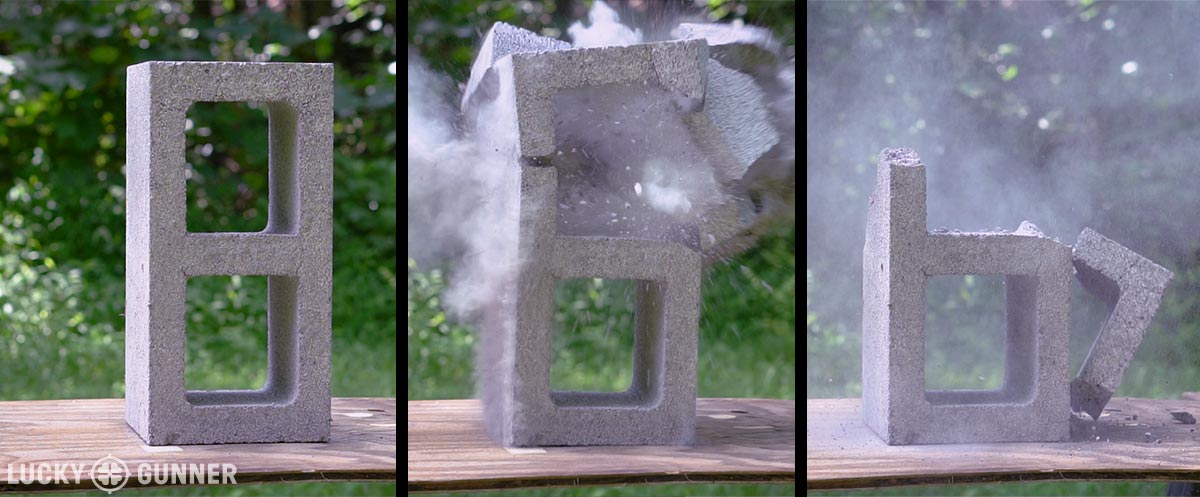
How About a Rifle or Carbine?
Taking that objection even further, why not use a carbine instead of a shotgun? That would give us one projectile per trigger press and it’s a lot more predictable than either buckshot or a slug. When 5.56 hits hard barriers, it tends to tumble and rapidly lose velocity. Depending on the load, it might even be less likely to penetrate exterior or interior walls than a pistol caliber. I don’t have anything against carbines. They’re easier to use than a shotgun or a handgun. They probably are the best choice for a lot of people.
The main reason I like shotguns for home defense is that they are really, really effective. A single round of buckshot to the torso almost always results in an immediate change of behavior. I’ve talked to guys who have seen a fair amount of combat overseas and they seem to like the M4 just fine, but they never shoot anyone just once or twice with 5.56. From what I understand, three to five rounds minimum is more or less standard operating procedure if you expect the guy to stay down. I can run an AR pretty fast, but every trigger pull is an opportunity to make a life-altering mistake. If given the choice, I would prefer to fire as few shots as possible. That’s why, for me, a shotgun is the superior choice at close range.
8-pellet Federal FliteControl will make a pattern between the size of a quarter and a baseball at any range inside my house. There’s very little chance of stray pellets with a pattern like that. If I’m faced with a deadly threat, I just have to get one round in the upper body and that’s almost guaranteed to be the end of it. That’s less opportunity for them to do harm to me or my family. It’s less opportunity for me to fire a shot that misses and hits a family member or a neighbor. It takes a little more work to reach a level of unconscious competence with a shotgun, but to me, it’s worth it because it’s the tool that has the greatest potential to end the fight quickly.
No matter what firearm you choose to protect your home with, please remember that you are fully accountable for every bullet, pellet, projectile that leaves that barrel. Get a bright light to go with that gun. Get some training, get lots of practice, and get your ammo from us at LuckyGunner.com.
